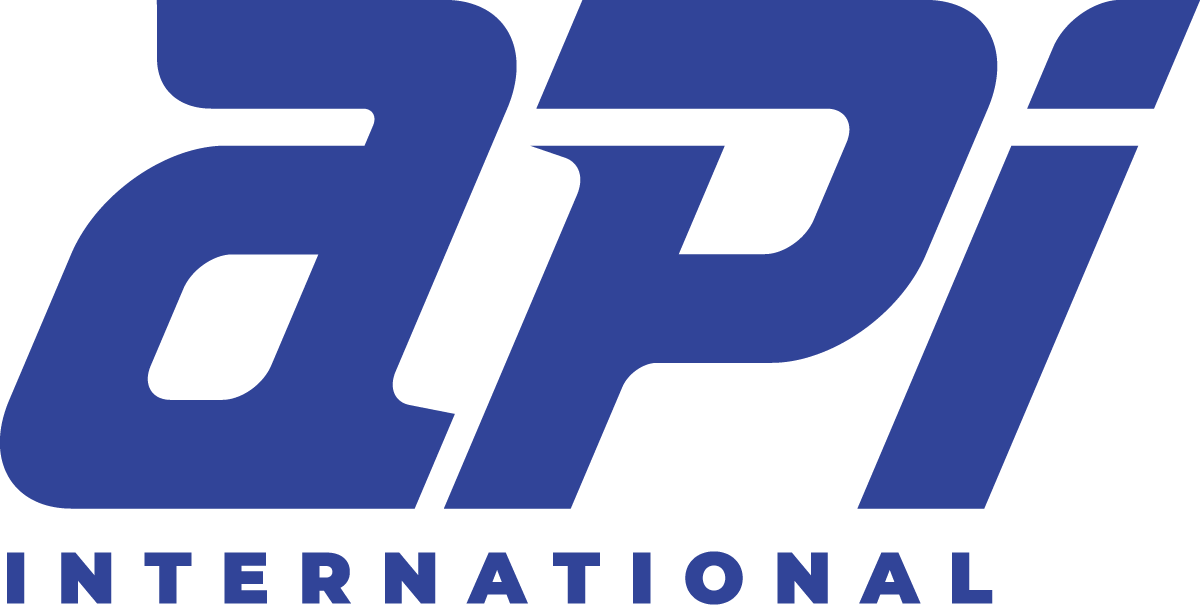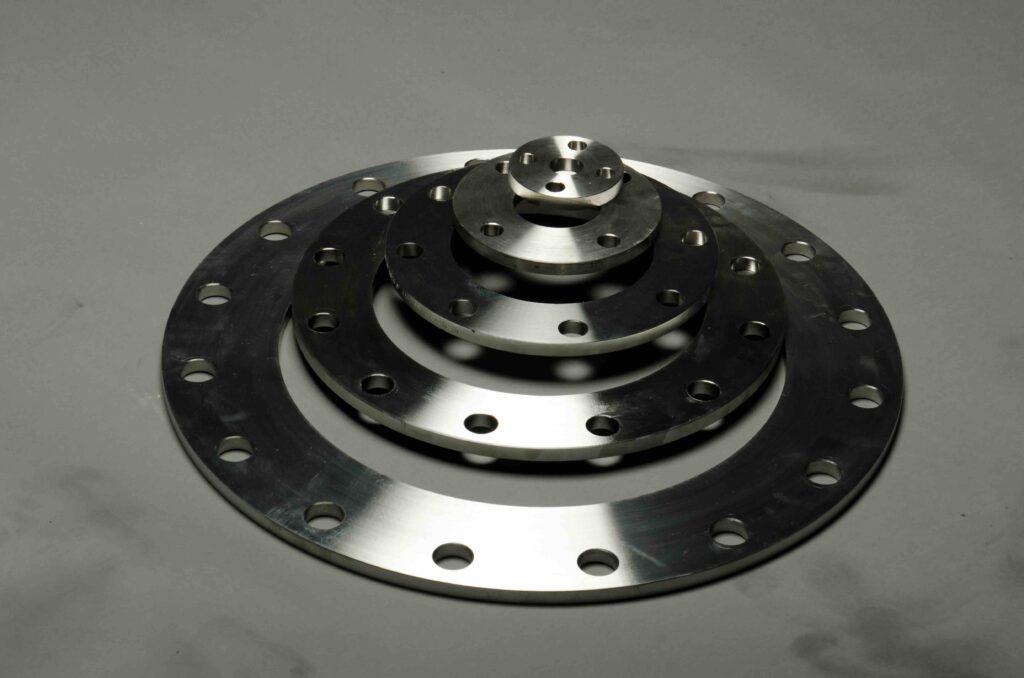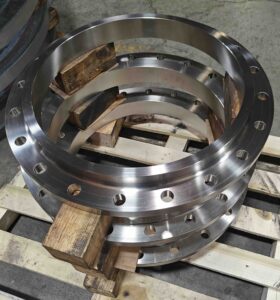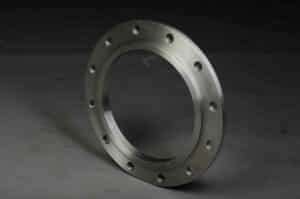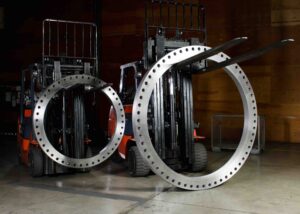What Are Bolt Patterns?
A flange’s bolt pattern is defined by three main dimensions:
-
Number of Bolt Holes: How many fasteners are used to secure the flange.
-
Bolt Hole Diameter: The size of each hole, which dictates the bolt size.
-
Bolt Circle Diameter (BCD): The imaginary circle that connects the centers of all bolt holes.
AWWA Flange Classes and Bolt Patterns
AWWA flanges are governed by standards C207 and C228, and they are divided into pressure classes A, B, D, E, and F. Each class follows a drilling standard that aligns with ANSI/ASME flange bolt patterns.
| AWWA Class | Pressure Rating | Bolt Pattern | Compatibility Notes |
|---|---|---|---|
| Class A | Up to 50 psi (primarily light service) | ANSI/ASME Class 150 | Shares Class 125/150 drilling; compatible/interchangeable with B, D & E; typically used for low-pressure or open-ended irrigation/exhaust systems, and all other low-pressure specialty pipe systems. |
| Class B | Up to 86 psi | ANSI/ASME Class 150 | Shares Class 125/150 drilling; compatible/interchangeable with D & E; often used for low-pressure waterworks |
| Class D | Up to 175 psi (4″–12″)150 psi (14″ and larger) | ANSI/ASME Class 150 | Shares Class 125/150 drilling; compatible/interchangeable with B & E; widely used in most waterworks and many industrial applications |
| Class E | Up to 275 psi | ANSI/ASME Class 150 | Shares Class 125/150 drilling; compatible/interchangeable with B & D; used in higher pressure tolerance systems requiring Class 150 drilling |
| Class F | Up to 300 psi (4″–48″) | ANSI/ASME Class 300 | Class 250/300 drilling; not compatible with A, B, D, or E; requires dedicated Class 300 components for higher-pressure waterworks and many other applications |
Hub vs. Ring Flanges: Do They Affect Bolt Patterns?
Other Flange Types and Compatibility Notes
1. Backing Flanges
Our backing rings and stub ends are manufactured to the same class (Class 150).
An AWWA Class B, D, or E flange can be machined with a chamfer to function as a backing ring alternative.
The modified flange remains fully compatible with stub ends.
2. Exhaust Flanges
Unlike AWWA waterworks flanges, exhaust flanges follow manufacturer-specific patterns. But many industrial exhaust applications utilize AWWA Class A, B, or D flanges.
For example, Caterpillar and Detroit Diesel each use their own proprietary bolt layouts.
Always verify the pattern against the Automotive/OEM specification.
3. DIN Flanges
European DIN 1092 flanges are not compatible with ANSI/ASME/AWWA bolt patterns.
Recommendation: Avoid mixing DIN with ANSI/ASME/AWWA systems.
3. ANSI/ASME Flanges
API International specializes in class 125/150 and class 300 ANSI/ASME flanges. The bolt hole patterns align if they share the same class.
The bolt hole patterns of ANSI/ASME flanges should be compatible with other flanges if they share the same class (class 150 bolt hole pattern aligns with other class 125/150 bolt hole patterns).
Quick Reference Table
| AWWA Class | Bolt Pattern | Compatibility Notes |
|---|---|---|
| A, B, D, E | Class 150 | Fully interchangeable with each other |
| F | Class 300 | Requires matching Class 300 flanges only |
| Backing | Class 150 | Compatible with stub ends; can be machined from B/D/E |
| Exhaust | Manufacturer-specific | Manufacturer/OEM-specific: Must match OEM pattern (e.g., Caterpillar, Detroit, etc.). Compatible with A, B, C, D, E (drilling/bolt pattern and pressure must be verified) |
| DIN | DIN 1092 | Only compatible with DIN flanges |
Why Compatibility Matters
Using mismatched bolt patterns can result in:
Misalignment: Bolts won’t seat properly, preventing assembly.
Leaks: Poor gasket compression leads to water loss or contamination.
Mechanical failure: Stress concentrations can damage flanges, bolts, or connected piping.
Practical Guidance for Engineers & Planners
1. Match class numbers, not just pressure ratings
“Class 150 pattern” = A, B, D, E. “Class 300 pattern” = F
2. Verify with specification sheets
3. Stay within the same bolt pattern group
A, B, D, and E can be mixed; Class F requires its own matched components. ANSI/AWWA vs. DIN will not align.
